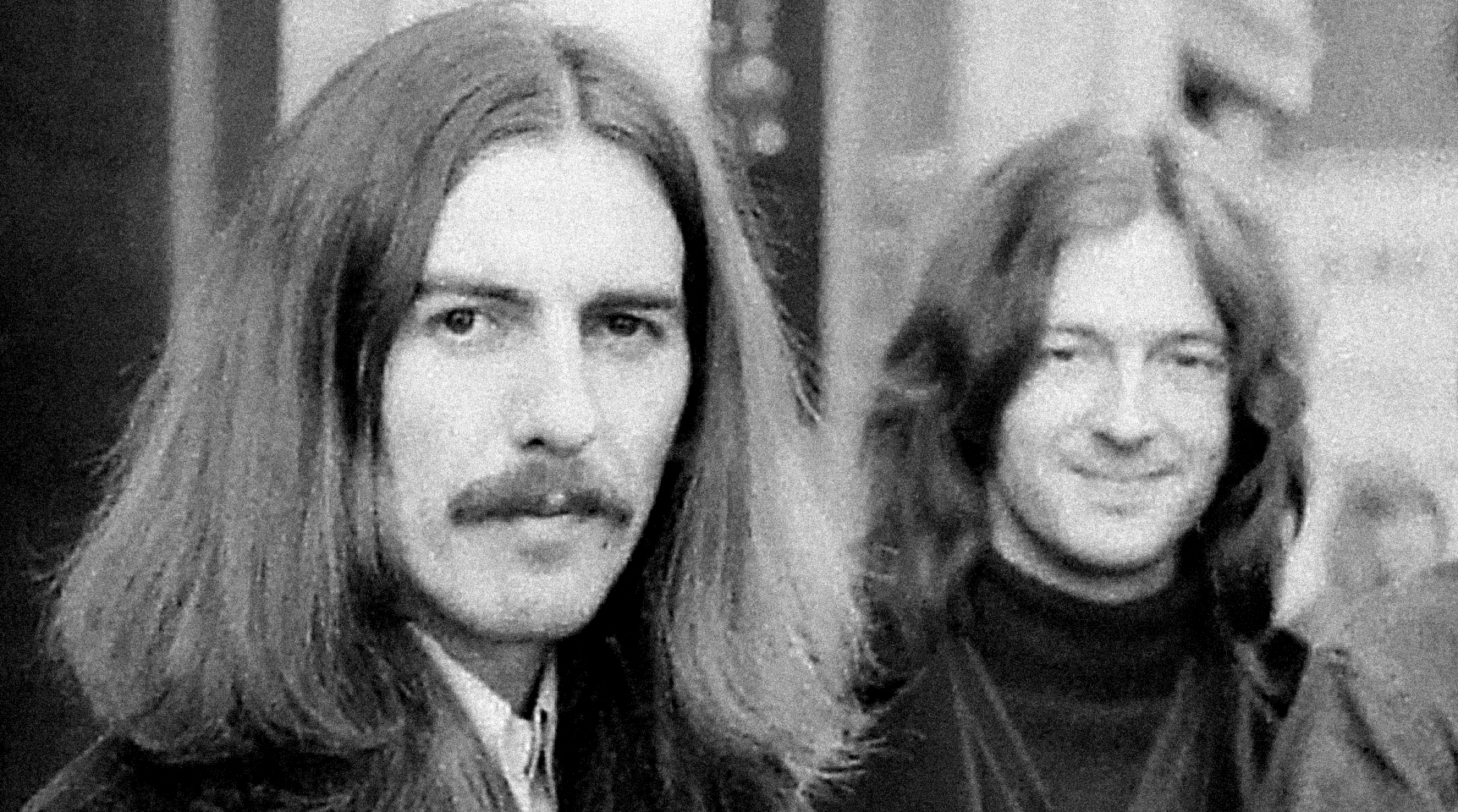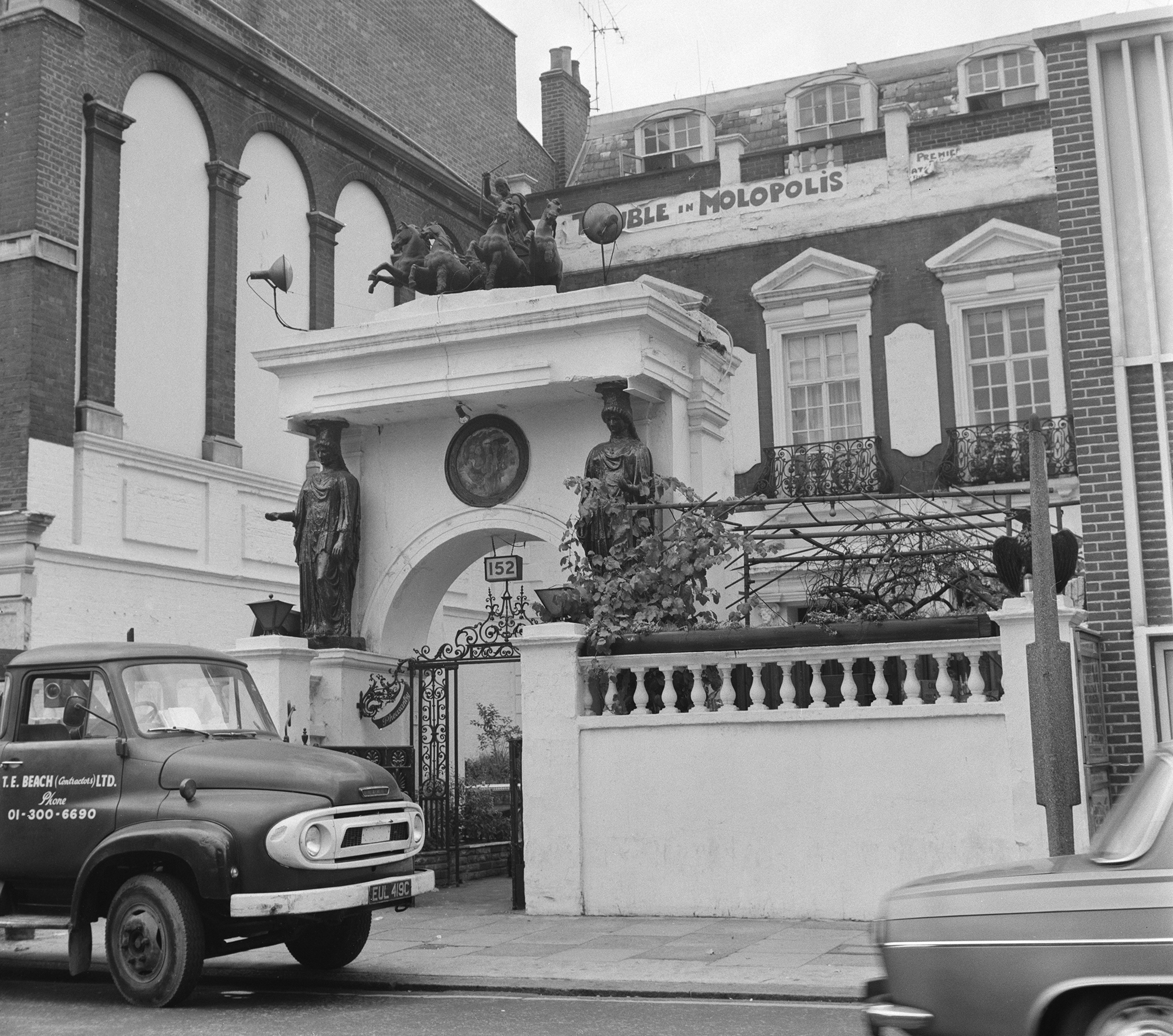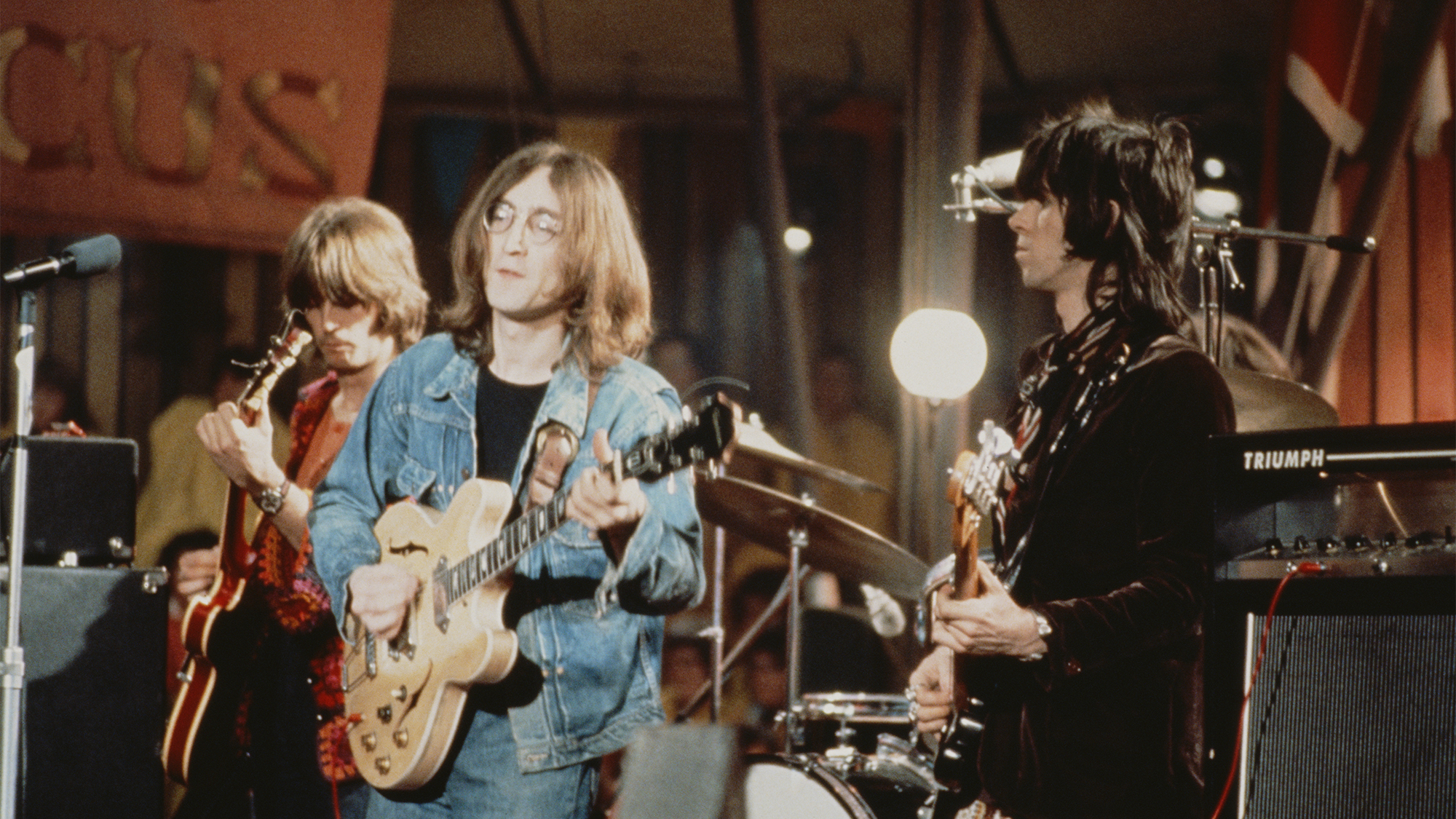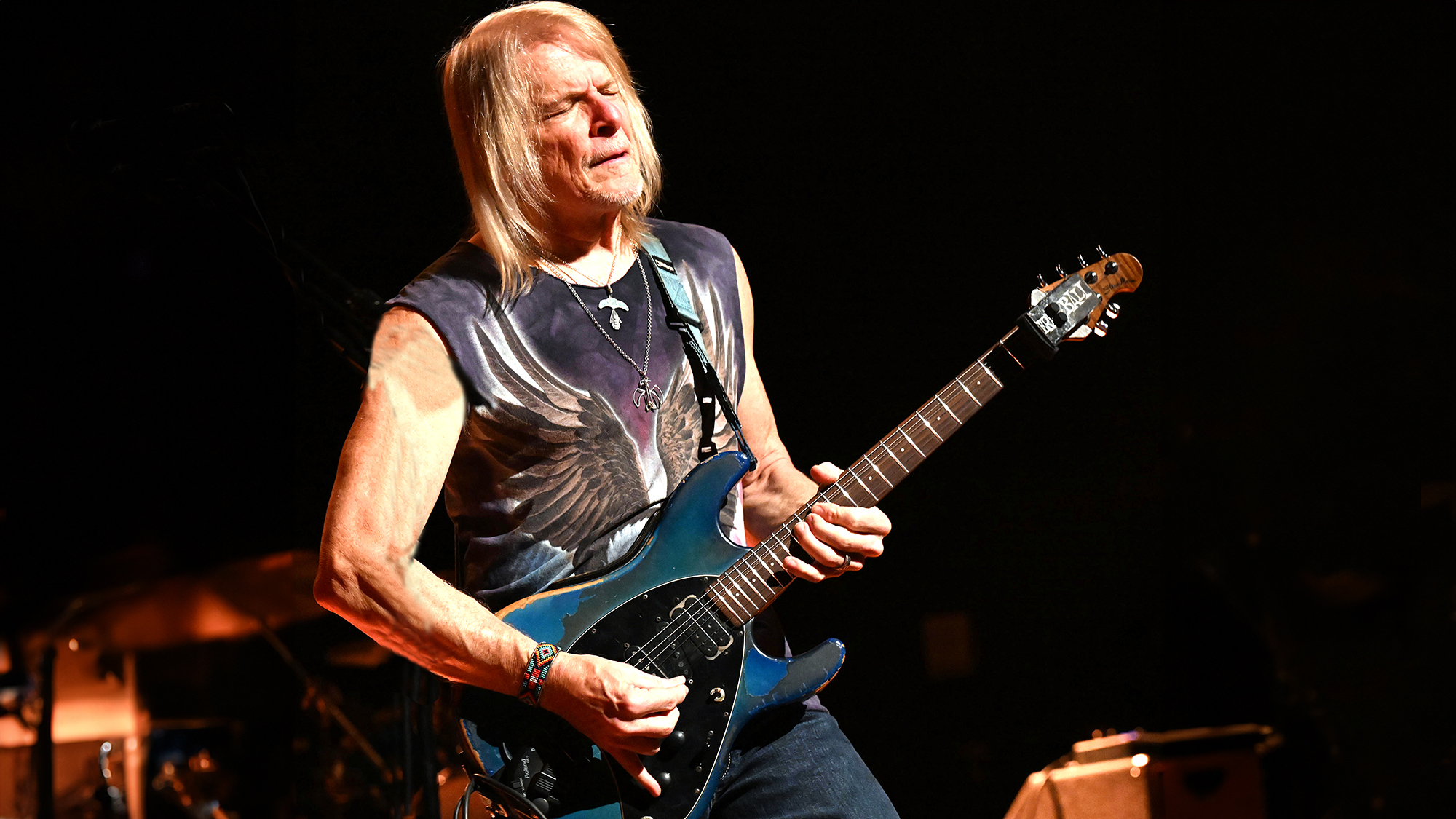“John Lennon would use my name every now and then for clout, as if I was the fastest gun.” Eric Clapton on his friendship with George Harrison and the shocking time he was nearly asked to join the Beatles
Harrison and Clapton bonded through guitars and music in 1968 at a time when both were struggling through major changes in their careers

The story of George Harrison and Eric Clapton’s deep friendship became a focal point once again with the news that the two men shared a rare 1913 Gibson Style O guitar. The acoustic guitar, which went up for sale on Reverb.com this week for nearly $1 million, was used while Harrison and Clapton composed “Badge,” their joint composition from Cream’s Goodbye, and was nicknamed Pattie in a crude reference to Pattie Boyd, who married first Harrison and then Clapton.
Few people, including Beatles fanatics, were aware of the guitar’s existence before the guitar surfaced on Reverb, adding a new, if minor, instrument to the men’s history.
What often gets lost in the story of Harrison and Clapton’s friendship is how both men were supports for each others growth in 1968, a year in which each was working through new developments in their career. Cream had reached its end, and Clapton was insecure about his prospects for a solo career.
Harrison, having spent the past two years studying sitar and paying scant attention to guitar, had once again turned his focus to the instrument, having decided he would never master sitar. Moreover, Harrison had reached his breaking point as the Beatles’ third, and disregarded, songwriter.
This had become evident just one month before the October 1968 writing session for “Badge,” when, on September 6, Harrison invited Clapton to record his uncredited lead guitar work on Harrison’s “While My Guitar Gentle Weeps,” from the Beatles’ White Album. The group had recorded it once already, but Harrison was unhappy with their unenthusiastic performance — an unfortunately typical response to Harrison’s work.
His decision to bring in Clapton unannounced was the first indication that he was willing to break out of the quartet’s insular groupthink.
Harrison and Clapton's friendship dates back quite a bit further than their White Album session. They first met in December 1964, while Clapton was in the Yardbirds, who were on the bill of the Beatles' Christmas show at London’s Hammersmith Odeon. The two guitarists struck up an acquaintance that would grow over the years.
All the latest guitar news, interviews, lessons, reviews, deals and more, direct to your inbox!

At the time of the White Album sessions, Clapton was living at the Pheasantry, an 18th-century building in London’s Chelsea district that had long been popular with artists and celebrities and had recently been converted into apartments and a nightclub. Harrison was a regular visitor and would share acetates, or demonstration discs, of the Beatles’ latest songs.
“Sometimes I would go down to George’s house in Esher and we’d play our guitars and take acid, and bit by bit a friendship began to form,” the guitarist wrote in Clapton: The Autobiography.
By the time of Clapton’s White Album participation, Harrison was annoyed by his bandmates. His song “Not Guilty” had been poorly received by John Lennon and Paul McCartney, and the sessions for “While My Guitar Gently Weeps” weren’t going well. After leading the group through one recording of the song, Harrison determined he was unhappy with the results and on September 5 decided to remake the tune.
Sometimes I would go down to George’s house in Esher and we’d play our guitars and take acid, and bit by bit a friendship began to form."
— Eric Clapton
Although the Beatles managed to record a new backing track to Harrison’s satisfaction, “They weren’t taking it seriously,” he said. “And so I went home that night thinking, Well, that’s a shame, because I knew the song was pretty good.”
The next day, Harrison was giving Clapton a lift in his car when he spontaneously suggested the guitarist come with him to Abbey Road. “I said, ‘What are you doing today?’ ” Harrison recalled. “ ‘Why don’t you come to the studio and play on this song for me?’ He said, ‘Oh no — I can’t do that. Nobody’s ever played on a Beatles record and the others wouldn’t like it.’
"I said, ‘Look, it’s my song, and I’d like you to play on it.’ ”
As Clapton recalled, he didn’t even have a guitar with him and had to use one of Harrison’s, the Cherry Red 1957 Gibson Les Paul, known as Lucy, that he had gifted to Harrison earlier that year.

“My reading of the situation was that Paul and John were quite disparaging about both George’s and Ringo’s contributions to the group,” he wrote. “George would put songs forward on every project only to find them pushed into the background.
“I think that he felt our friendship would give him some support, and that having me there to play might stabilize his position and maybe even earn him some respect.”
My reading of the situation was that Paul and John were quite disparaging about both George’s and Ringo’s contributions to the group."
— Eric Clapton
Clapton’s presence seemed to help the session. “Paul got on the piano and played a nice intro and they all took it more seriously,” Harrison said.
The experience proved instructive: The next year, during the fractious sessions for Let It Be, Harrison invited keyboardist Billy Preston to perform with the Beatles knowing it would make the group try harder.
Ironically, Harrison’s invitation to Clapton nearly backfired. On January 10, 1969, during the making of Let It Be, he briefly quit the Beatles after a spat with McCartney over his guitar playing.
“Let’s get in Eric,” Lennon suggested to McCartney. “He’s just as good and not such a headache.”

Lennon was obviously impressed by the guitarist. In December 1968, he invited Clapton to join the Dirty Mac, his one-off supergroup that included the Rolling Stones’ Keith Richards and Jimi Hendrix Experience drummer Mitch Mitchell, for an appearance at the Rolling Stones Rock and Roll Circus all-star musical concert. The two men worked together again in the final months of 1969 when Clapton performed in an early touring lineup of the Plastic Ono Band.
Even afterward, Lennon continue to press Clapton for a collaboration, going as far as to write him a letter stating, “I really feel that I could bring out the best in you.”
Clapton, however, doesn’t believe there was ever a chance he would have been asked to join the Beatles.
“Lennon would use my name every now and then for clout, as if I was the fastest gun,” he said in 1998. “I don’t think I could have been brought into the whole thing because I was too much a mate of George’s.”
Christopher Scapelliti is editor-in-chief of GuitarPlayer.com and the former editor of Guitar Player, the world’s longest-running guitar magazine, founded in 1967. In his extensive career, he has authored in-depth interviews with such guitarists as Pete Townshend, Slash, Billy Corgan, Jack White, Elvis Costello and Todd Rundgren, and audio professionals including Beatles engineers Geoff Emerick and Ken Scott. He is the co-author of Guitar Aficionado: The Collections: The Most Famous, Rare, and Valuable Guitars in the World, a founding editor of Guitar Aficionado magazine, and a former editor with Guitar World, Guitar for the Practicing Musician and Maximum Guitar. Apart from guitars, he maintains a collection of more than 30 vintage analog synthesizers.
